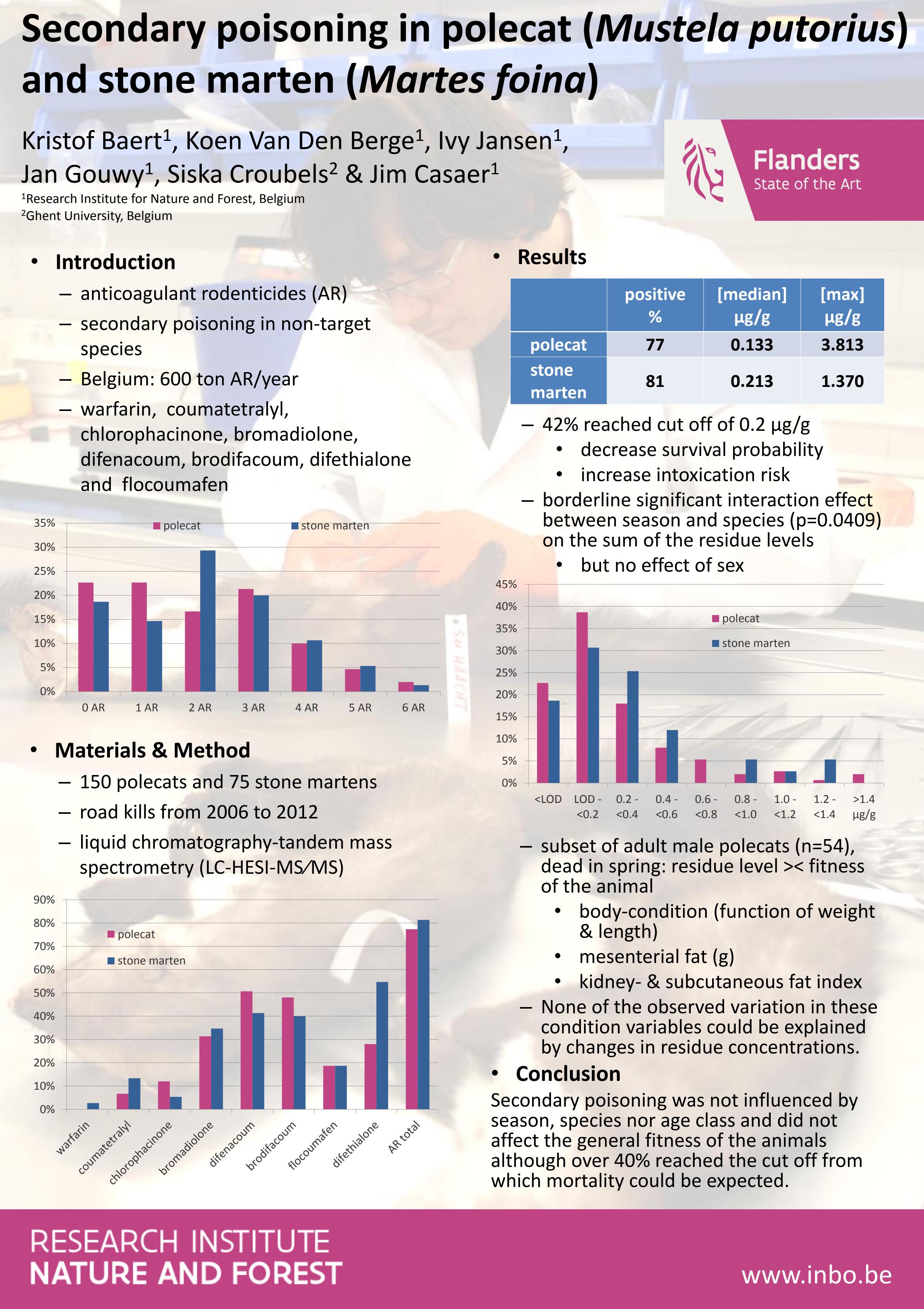Secondary poisoning in polecat (Mustela putorius) and stone marten (Martes foina)
Details
| Aantal pagina's | 1 |
|---|---|
| Type | Poster |
| Categorie | Onderzoek |
| Taal | Engels |
Bibtex
@misc{29e63b59-322c-43d9-a4b2-73765008bd4a,
title = "Secondary poisoning in polecat (Mustela putorius) and stone marten (Martes foina)",
abstract = "The use of anticoagulant rodenticides (AR) can lead to secondary poisoning in non-target wildlife species like various predators. As in Belgium each year approximately 600 tons AR are used we examined the liver of 150 polecats and 75 stone martens for the presence of 8 different AR-residues using a validated LC-HESI-MS⁄MS method: warfarin, coumatetralyl, chlorophacinone, bromadiolone, difenacoum, brodifacoum, flocoumafen and difethialone. Almost all animals were road kills, collected from 2006 to 2012. About 77% and 81% of the livers of respectively polecat and stone marten contained AR residues. The maximum (median) concentration was 3,813 µg/g (0,133 µg/g) for polecat and 1,370 µg/g (0,213 µg/g) for stone marten, while the maximum number of different AR residues detected simultaneously in one animal was six. 42% of the animals reached the cut-off of 0,2 µg/g from which survival probability starts to decrease and intoxication could be expected. Statistical analysis did reveal a borderline significant interaction effect between season and species (p=0.0409) on the sum of the residue levels, but no effect of sex. For a subset of adult male polecats (n=54) found dead in spring we analysed their residue level against the fitness of the animal expressed as body-condition (function of eviscerated weight and total length), mesenterial fat (g), kidney- and subcutaneous fat index. None of the observed variation in these condition variables could be explained by changes in residue concentrations. Hence we assume that the condition variables considered here are not altered by secondary poisoning.",
author = "Kristof Baert and Koen Van Den Berge and Ivy Jansen and Jan Gouwy and Siska Croubels and Jim Casaer",
year = "2015",
month = sep,
day = "21",
doi = "",
language = "Nederlands",
publisher = "Instituut voor Natuur- en Bosonderzoek",
address = "België,
type = "Other"
}

